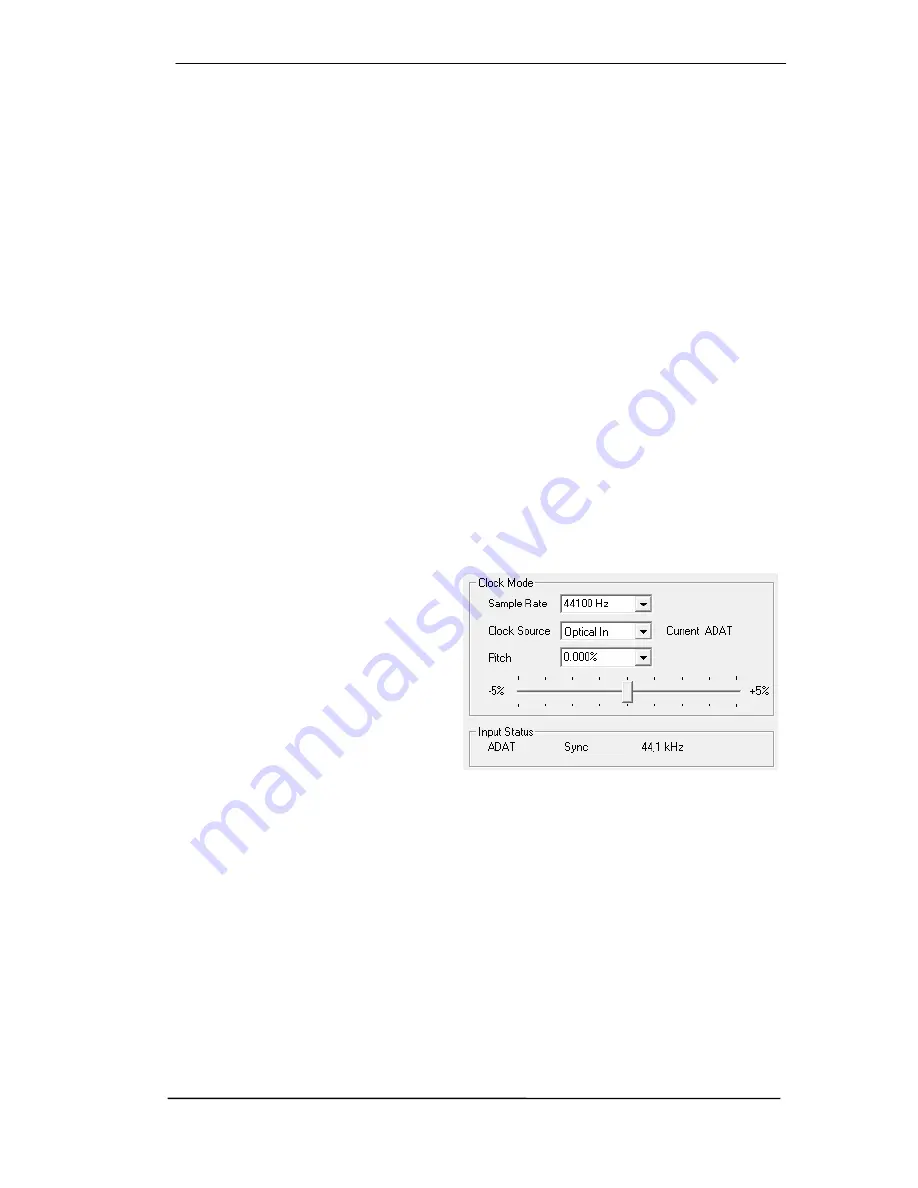
User's Guide Fireface UFX+
© RME
25
8.5 Analog Recording
For recordings via the analog inputs the corresponding record device has to be chosen (Fire-
face UFX+ Analog (x+x)).
The input sensitivity of the rear inputs can be changed in two steps and with adjustable gain in
TotalMix (Input Channel Settings, Level), assuring the highest signal to noise ratio will be
achieved. A further optimization can be achieved by adjusting the source itself. Raise the
source’s output level until the peak level meters in TotalMix reach about –3 dB.
The level of the front-side analog inputs can be optimized via TotalMix (Input Channel Settings,
Gain), or directly at the Fireface UFX+ by the key Mic/Gain and the encoders 1/2. A double
coloured signal and clip LED provides useful information about the current level state.
Further information is found in chapter 19.
It often makes sense to monitor the input signal or send it directly to the output. This can be
done at zero latency using
TotalMix FX
(see chapter 25).
An
automated
control of real-time monitoring can be achieved by Steinberg’s ASIO protocol
with RME’s ASIO drivers and all ASIO 2.0 compatible programs. When 'ASIO Direct Monitoring'
has been switched on, the input signal is routed in real-time to the output whenever a recording
is started (punch-in).
8.6 Digital Recording
Unlike analog soundcards which produce empty wave files (or noise) when no input signal is
present, digital interfaces always need a valid input signal to start recording.
Taking this into account, RME added a
comprehensive I/O signal status display to
the Fireface UFX+, showing sample
frequency, lock and sync status for every
input, and several status LEDs directly at
the unit.
The sample frequency shown in the fields
Clock Mode and Input Status is useful as a
quick display of the current configuration of
the unit and the connected external
equipment. If no sample frequency is
recognized, it will read ‘No Lock’.
This way, configuring any suitable audio application for digital recording is simple. After select-
ing the correct input, Fireface UFX+ displays the current sample frequency. This parameter can
then be changed in the application’s audio attributes (or similar) dialog.
Summary of Contents for Fireface UFX+
Page 7: ...User s Guide Fireface UFX RME 7 User s Guide Fireface UFX General...
Page 12: ...12 User s Guide Fireface UFX RME...
Page 13: ...User s Guide Fireface UFX RME 13 User s Guide Fireface UFX Installation and Operation Windows...
Page 31: ...User s Guide Fireface UFX RME 31 User s Guide Fireface UFX Installation and Operation Mac OS X...
Page 41: ...User s Guide Fireface UFX RME 41 User s Guide Fireface UFX Inputs and Outputs...
Page 49: ...User s Guide Fireface UFX RME 49 User s Guide Fireface UFX Stand Alone Operation...
Page 52: ...52 User s Guide Fireface UFX RME...
Page 53: ...User s Guide Fireface UFX RME 53 User s Guide Fireface UFX TotalMix FX...
Page 55: ...User s Guide Fireface UFX RME 55...
Page 91: ...User s Guide Fireface UFX RME 91 User s Guide Fireface UFX Class Compliant Mode...
Page 97: ...User s Guide Fireface UFX RME 97 User s Guide Fireface UFX DURec Direct USB Recording...
Page 104: ...104 User s Guide Fireface UFX RME...
Page 105: ...User s Guide Fireface UFX RME 105 User s Guide Fireface UFX Technical Reference...
Page 118: ...118 User s Guide Fireface UFX RME 40 Diagrams 40 1 Block Diagram Fireface UFX...
Page 120: ...120 User s Guide Fireface UFX RME...
Page 121: ...User s Guide Fireface UFX RME 121 User s Guide Fireface UFX Miscellaneous...






























